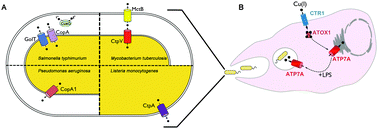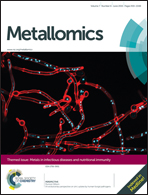Copper tolerance and virulence in bacteria
Abstract
Copper (Cu) is an essential trace element for all aerobic organisms. It functions as a cofactor in enzymes that catalyze a wide variety of redox reactions due to its ability to cycle between two oxidation states, Cu(I) and Cu(II). This same redox property of copper has the potential to cause toxicity if copper homeostasis is not maintained. Studies suggest that the toxic properties of copper are harnessed by the innate immune system of the host to kill bacteria. To counter such defenses, bacteria rely on copper tolerance genes for virulence within the host. These discoveries suggest bacterial copper intoxication is a component of host nutritional immunity, thus expanding our knowledge of the roles of copper in biology. This review summarizes our current understanding of copper tolerance in bacteria, and the extent to which these pathways contribute to bacterial virulence within the host.

- This article is part of the themed collection: Metals in infectious diseases and nutritional immunity

 Please wait while we load your content...
Please wait while we load your content...